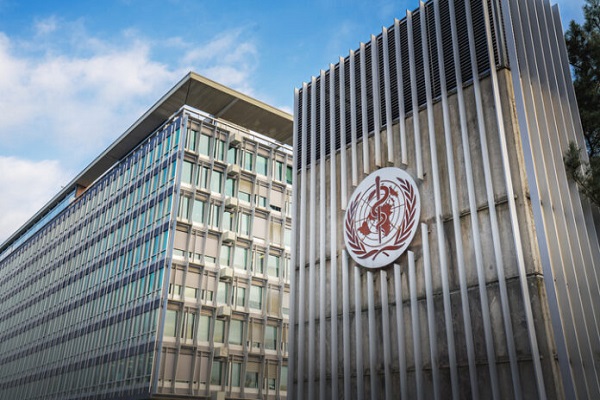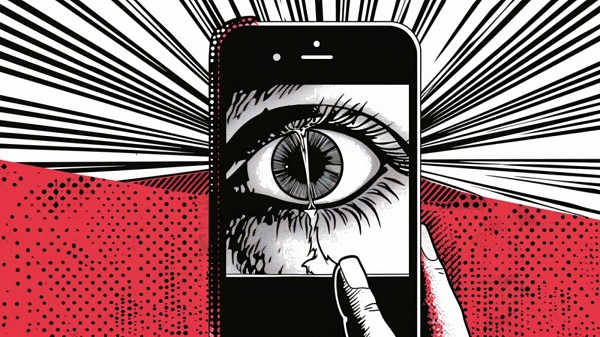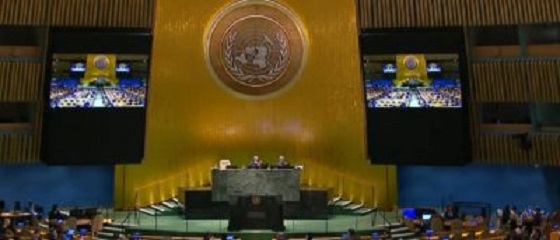Great Reset
Biden Administration Eager to Sign WHO Pandemic Treaty

From Heartland Daily News
By Bonner Russell Cohen, Ph.D.
The Biden administration signaled its support for the World Health Organization’s (WHO) new pandemic treaty expected to be finalized at its World Health Assembly in Geneva, Switzerland, the final week of May.
Pamela Hamamoto, the State Department official representing the United States at the meeting, stated that “America is committed to signing the treaty that will ‘build a stronger global health structure,’” wrote John Tierney, a senior fellow at the Manhattan Institute and a contributing editor, in the City Journal.
Adoption of a legally binding pact governing how countries around the world are to respond to future outbreaks like the recent COVID-19 pandemic has been the goal of WHO-directed negotiations since 2021. The WHO, a United Nations-sponsored organization, came under sharp criticism for its handling of the coronavirus.
On May 8, attorneys general from 22 states sent President Biden a letter saying they oppose the accords which will turn the WHO into the “world’s governor of public health.” The letter says giving the WHO such authority violates the U.S. Constitution, and could lead to censorship of dissenting opinions, undermine Constitutional freedoms, and give the WHO power to declare any “emergency” besides health including climate change, gun violence, and immigration.
Missteps on COVID-19
In a post on Twitter (now X) on January 14, 2020, the WHO stated: “Preliminary investigations conducted by the Chinese authorities have found no clear evidence of human-to-human transmission of the novel #coronavirus (2019-nCoV) identified in #Wuhan, #China.”
Two weeks later, on January 30, 2020, WHO’s Emergency Committee issued a Public Health Emergency of International Concern (PHEIC), stating, “The Committee emphasized that the declaration of a PHEIC should be seen in the spirit of support and appreciation of China, its people, and the actions China has taken on the front lines of this outbreak, with transparency and, it is to be hoped, success.”
The WHO’s initial investigation into the origins of COVID-19 concluded it was improbable that the virus resulted from experiments at the Wuhan Institute of Virology, though it later acknowledged that it could have come from a lab leak at Wuhan. The WHO’s investigation, which was thwarted by Chinese officials, ultimately reached no conclusion. President Trump announced the United States’ withdrawal from the WHO, a decision reversed by President Joe Biden on January 20, 2021.
More Smoke and Mirrors
Further undermining the WHO’s credibility in setting policies on managing a future pandemic, the group decided to include Peter Daszak, president of the New York-based EcoHealth Alliance, in its initial investigation into the origins of COVID-19.
Daszak and EcoHealth Alliance prominently featured in an investigation by the U.S. House Select Subcommittee on the Coronavirus Pandemic into the government’s funding and lack of oversight of gain-of-function research at the Wuhan lab, for which EcoHealth received grants from the National Institute of Allergy and Infectious Diseases and the National Institutes of Health.
In an interim report released on May 1, 2024, the subcommittee said there is “significant evidence that Daszak violated the terms of the NIH grant awarded to EcoHealth. Given Dr. Daszak’s apparent contempt for the American people and disregard for legal reporting requirements, the Select Subcommittee recommends the formal debarment of and a criminal investigation into EcoHealth and its President.”
After the release of the report, U.S. Rep. Tom Emmer (R-MN) told the Washington Examiner, “The World Health Organization covered up the Chinese Communist Party’s role in developing and spreading COVID-19 and has since failed to hold them accountable for the global pandemic that killed millions, upended our daily lives, and destroyed thousands of small businesses.”
Public Fed Up
The WHO’s shaky record on COVID, including its close ties to China and Peter Daszak, have taken a toll on the public’s willingness to accept its leadership in any future pandemics.
A poll conducted by McLaughlin & Associates for the Center for Security Policy, released on April 17, found that 54.6 percent of likely voters oppose tying the United States to a WHO pandemic treaty, and just 29.0 percent favor such a move.
Agreements Bypass Congress
While providing few details, at the World Economic Forum in Davos, Switzerland in January, WHO Director General Tedros Ghebreyesus said, “The pandemic agreement can bring all the experience, all the challenges we have faced and all the solutions into one. That agreement could help us prepare for the future in a better way.”
The “treaty” the Biden administration is eager to sign will likely be an executive agreement, like the 2015 Paris Climate Agreement, which was not presented to the U.S. Senate for ratification but contained “commitments” President Barack Obama pledged to honor.
Also in the works in Geneva are amendments to International Health Regulations, which Congress would not approve or disapprove.COVID
WHO’s Power Grab
Sen. Ron Johnson (R-WS), sent a letter to President Biden signed by all 49 Republican senators, expressing their concern about the powers that could be handed to WHO, on May 2.
“Some of the over 300 proposals for amendments made by member states would substantially increase the WHO’s emergency powers and constitute intolerable infringements upon U.S. sovereignty,” the letter states.
Craig Rucker, president of the Committee for a Constructive Tomorrow (CFACT), who has attended UN-sponsored conferences around the world for over 30 years, says the WHO is a destructive force.
“WHO’s performance during COVID-19 was a lethal combination of incompetence and dishonesty,” said Rucker. “The organization failed to protect public health and went to extraordinary lengths to cover up China’s role in fostering gain-of-function research at the Wuhan lab. Ratification of any WHO pandemic treaty would be nothing short of a travesty.”
Bonner Russell Cohen, Ph.D. ([email protected]) is a senior fellow at the National Center for Public Policy Research.
Censorship Industrial Complex
UK Government “Resist” Program Monitors Citizens’ Online Posts

Business
The UN Pushing Carbon Taxes, Punishing Prosperity, And Promoting Poverty


From the Daily Caller News Foundation
Unelected regulators and bureaucrats from the United Nations have pushed for crushing the global economy in the name of saving the planet.
In October, the International Maritime Organization (IMO), a specialized agency within the U.N., proposed a carbon tax in order to slash the emissions of shipping vessels. This comes after the IMO’s April 2025 decision to adopt net-zero standards for global shipping.
Had the IMO agreed to the regulation, it would have been the first global tax on greenhouse gas emissions. Thankfully, the United States was able to effectively shut down those proposals; however, while these regulations have been temporarily halted, the erroneous ideas behind them continue to grow in support.
Proponents of carbon taxes generally argue that since climate change is an existential threat to human existence, drastic measures must be taken in all aspects of our lives to address the projected costs. People should eat less meat and use public transportation more often. In the political arena, they should vote out so-called “climate deniers.” In the economic sphere, carbon taxes are offered as a technocratic quick fix to carbon emissions. Is any of this worth it? Or are the benefits greater than the costs? In the case of climate change, the answer is no.
Carbon taxes are not a matter of scientific fact. As with all models, the assumptions drive the analysis. In the case of carbon taxes, the time horizon selected plays a major role in the outcome. So, too, does the discount rate and the specific integrated assessment models.
In other words, “Two economists can give vastly different estimates of the social cost of carbon, even if they agree on the objective facts underlying the analysis.” If the assumptions are subjective, as they are in carbon taxes, then they are not scientific facts. As I’ve pointed out, “carbon pricing models are as much political constructs as they are economic tools.” One must also ask whether carbon taxes will remain unchanged or gradually increase over time to advance other political agendas. In this proposal, the answer is that it increases over time.
Additionally, since these models are driven by assumptions, one would be right in asking who gets to impose these taxes? Of course, those would be the unelected bureaucrats at the IMO. No American who would be subject to these taxes ever voted for the people attempting to create the “world’s first global carbon tax.” It brings to mind the phrase “no taxation without representation.”
In an ironic twist, imposing carbon taxes on global shipping might actually be one of the worst ways to slash emissions, given the enormous gains from trade. Simply put, trade makes the world grow rich. Not just wealthy nations like those in the West, but every nation, even the most poor, grows richer. In wealthy countries, trade can help address climate change by enabling adaptation and innovation. For poorer countries, material gains from trade can help prevent their populations from starving and also help them advance along the environmental Kuznets curve.
In other words, the advantages of trade can, over time, make a country go from being so poor that a high level of air pollution is necessary for its survival to being rich enough to afford reducing or eliminating pollution. Carbon taxes, if sufficiently high, can prevent or significantly delay these processes, thereby undermining their supposed purpose. Not to mention, as of today, maritime shipping accounts for only about 3% of total global emissions.
The same ingenuity that brought us modern shipping will continue to power the global economy and fund growth and innovation, if we let it. The world does not need a layer of global bureaucracy for the sake of virtue signaling. What it needs is an understanding of both economics and human progress.
History shows that prosperity, innovation, and free trade are what make societies cleaner, healthier, and richer. Our choice is not between saving the planet and saving the economy; it is between free societies and free markets or surrendering responsibility to unelected international regulators and busybodies. The former has lifted billions out of poverty, and the latter threatens to drag us all backwards.
Samuel Peterson is a Research Fellow at the Institute for Energy Research.
-

 Carbon Tax2 days ago
Carbon Tax2 days agoCarney fails to undo Trudeau’s devastating energy policies
-

 Health2 days ago
Health2 days agoNEW STUDY: Infant Vaccine “Intensity” Strongly Predicts Autism Rates Worldwide
-

 Business2 days ago
Business2 days agoThe UN Pushing Carbon Taxes, Punishing Prosperity, And Promoting Poverty
-

 Business2 days ago
Business2 days agoClimate Climbdown: Sacrificing the Canadian Economy for Net-Zero Goals Others Are Abandoning
-

 Alberta2 days ago
Alberta2 days agoAlberta to protect three pro-family laws by invoking notwithstanding clause
-

 Artificial Intelligence2 days ago
Artificial Intelligence2 days agoLawsuit Claims Google Secretly Used Gemini AI to Scan Private Gmail and Chat Data
-

 Health1 day ago
Health1 day agoCDC’s Autism Reversal: Inside the Collapse of a 25‑Year Public Health Narrative
-

 Business1 day ago
Business1 day agoCanada is failing dismally at our climate goals. We’re also ruining our economy.





